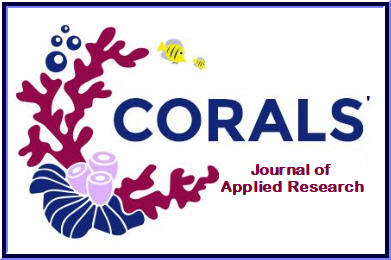Effectively designing costing systems for hospitals in the United States
DOI:
https://doi.org/10.58593/cjar.v3i1.35Keywords:
activity-based cost accounting, strategic management accounting, healthcare costs, healthcare management, pricing strategies, cost negotiations, artificial intelligenceAbstract
This generic qualitative inquiry research study addressed the U.S. healthcare industry’s need for a costing system. Costs fluctuate based on patient needs and physician choices, hindering competitive pricing strategies and revenue management. The perspectives of accounting, finance, IT, and operations hospital leaders (N = 9) with at least 1 year of experience were explored regarding effective strategic management accounting techniques to enhance and improve financial and operational performance in U.S. healthcare. The study found that competitive pricing, patient convenience, hospital complexity, technological investment for patient retention, cost analysis, cost optimization, revenue optimization, and negotiation power were general costing system foci.
The study’s findings included recognizing the business challenge many hospitals face in accurately determining the costs associated with delivering a specific healthcare service and effectively allocating those costs. Costs vary depending on the patient’s needs and the decisions made by the attending physician. Developing a competitive pricing plan holds promise in reducing hospital costs and effectively addressing revenue needs. The data showed that hospital complexity, lack of automation, negotiation power, competitive pricing strategies, and changes in regulatory status play a role in managing direct and indirect hospital costs. Artificial intelligence (MAXQDA and ChatGPT) played a role in the data analysis in this study.
References
Alawattage, C., & Wickramasinghe, D. (2022). Strategising management accounting: Liberal origins and neoliberal trends. Accounting, Auditing & Accountability Journal, 35(2), 518-546. https://doi.org/10.1108/AAAJ-01-2021-5124
Alexander, B., Andrews, M., & DeMichiei, R. (2021). The 100-percent solution to improving healthcare’s operating margins. HealthCatalyst. https://hcatwebsite.blob.core.windows.net/insights/Improving-HC-Operating-Margins_white-paper.pdf
Arts, T., Ginting, C. N., & Ginting, R. (2023). Activity based costing method as the basis for determining service rates in the radiology unit at Royal Prima Hospital Medan. International Journal of Health and Pharmaceutical, 3(4), 662–667. https://doi.org/10.51601/ijhp.v3i4.218
Ashworth, P. (2022a, October 19). Understanding costs: Part 1 — costing concepts. Financial Management. https://www.fm-magazine.com/news/2022/mar/understanding-costs-part-1-costing-concepts.html
Ashworth, P. (2022b, October 20). Understanding costs: Part 2 — resource-based costing. Financial Management. https://www.fm-magazine.com/news/2022/apr/understanding-costs-part-2-resource-based-costing.html
Barth, M., Livet, A., & De Guio, R. (2008). Effective activity-based costing for manufacturing enterprises using a shop floor reference model. International Journal of Production Research, 46(3), 621–646. https://doi.org/10.1080/00207540600845750
Bautista, J. R., Zhang, Y., & Gwizdka, J. (2022). Predicting health care professionals’ intention to correct health misinformation on social media. Telematics and Informatics, 73, Article 101864. https://doi.org/10.1016/j.tele.2022.101864
Braun, V., & Clarke, V. (2006). Using thematic analysis in psychology. Qualitative Research in Psychology, 3(2), 77–101. https://doi.org/10.1191/1478088706qp063oa
Braun, V., & Clarke, V. (2022). Thematic analysis: A practical guide. Sage
Bravo, F., Braun, M., Farias, V., Levi, R., Lynch, C., Tumolo, J., & Whyte, R. (2021). Optimization-driven framework to understand health care network costs and resource allocation. Health Care Management Science, 24(3), 640–660. https://doi.org/10.1007/s10729-021-09565-1
Butler, C. R., O'Hare, A. M., Kestenbaum, B. R., Sayre, G. G., & Wong, S. P. Y. (2021). An introduction to qualitative inquiry. Journal of the American Society of Nephrology: JASN, 32(6), 1275–1278. https://doi.org/10.1681/ASN.2021040473
Downloads
Published
Issue
Section
License
Copyright (c) 2025 Dr. Debra Lee Ann Pierre

This work is licensed under a Creative Commons Attribution-NonCommercial-ShareAlike 4.0 International License.







